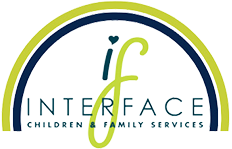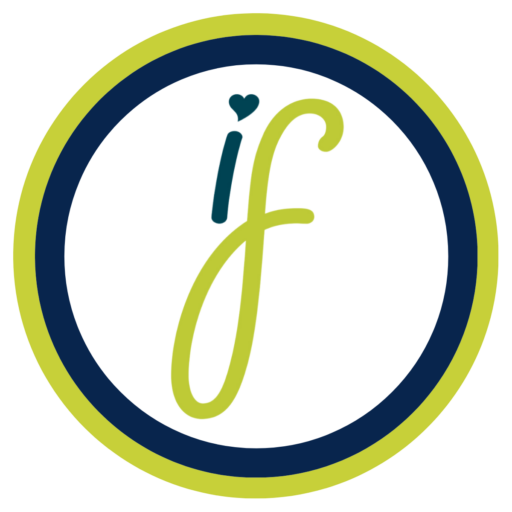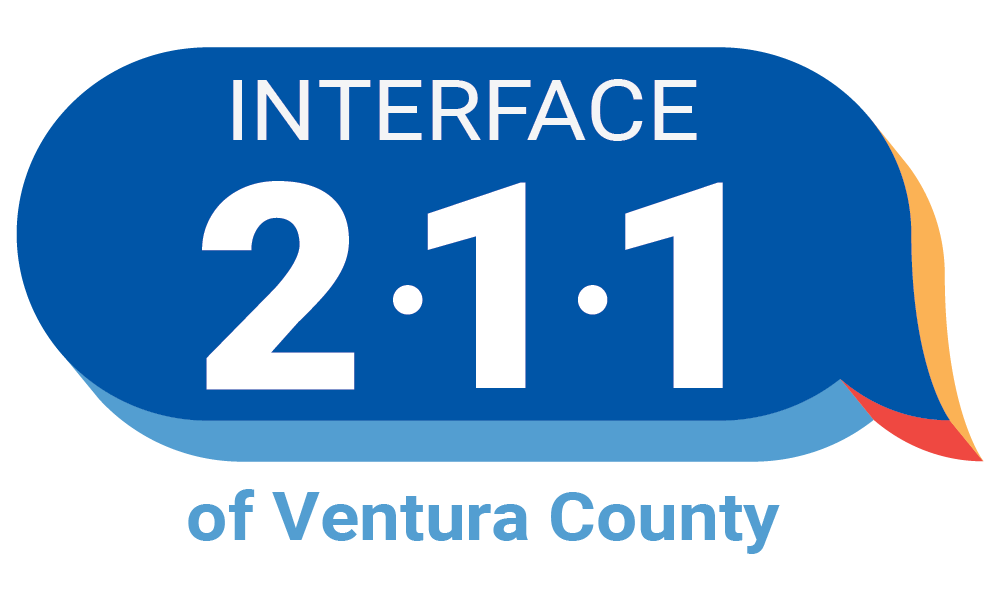
As Domestic Violence Awareness Month comes to a close, we would like to turn the mic, or in this case, the newsletter, over to Interface’s Family Violence Intervention Services Team to share stories and perspectives from the field.
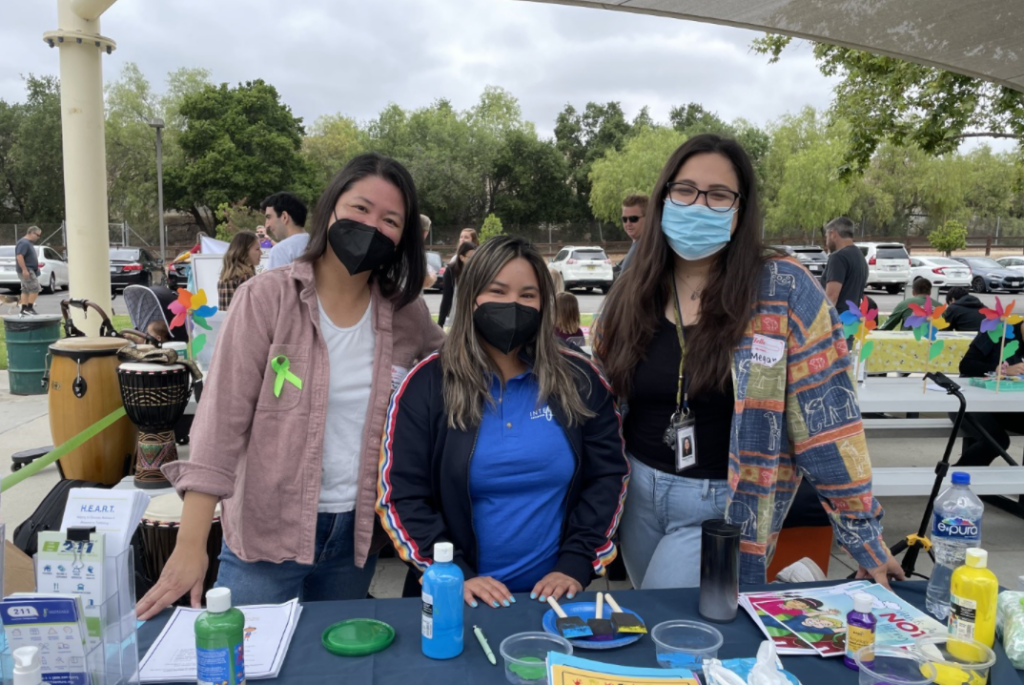
Alejandrina Carrasco, Director of Family Violence Intervention Services
Domestic Violence impacts millions of people each year. Every twenty seconds, someone is a victim of domestic violence. This is why bringing awareness to this public health issue is vital. We know domestic violence is preventable, but transforming communities requires a collective voice and the collaboration of individuals, families, institutions, and systems. Every day, alongside community partners, Interface participates in this collective effort, spreading awareness to help prevent future abuse and offering comprehensive survivor-centered services, including a 24/7 hotline, crisis response, safe shelter, advocacy, and counseling to those in need. Recently, a survivor of domestic violence who was staying in our shelter opened up to me and shared the following story:
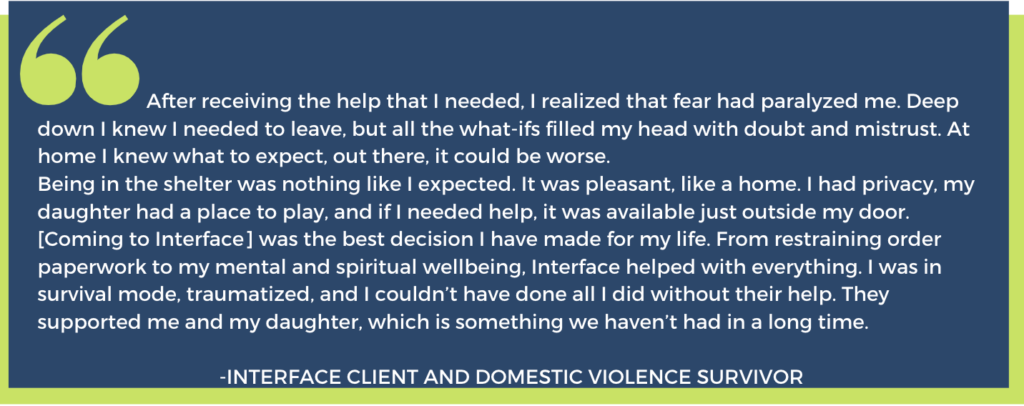
Stories like these remind me that our work is invaluable and impacts lives more than we can ever imagine. I’d like to give a special thank you to all my fellow advocates, preventionists, and victim service providers for joining our efforts to end domestic violence.
Cristina McQuillen, Lead Project Specialist for the Central Coast Family Violence Prevention Initiative
This month, I began a new class for my master’s program. The class focuses on the importance of building strong partnerships, exploring how they are formed and structured, and reasons why they fail or succeed. In participating and presenting at Interface’s annual 60-Hour Domestic Violence and Human Trafficking Training in August, I got to see firsthand the partnerships that we have built with organizations throughout the central coast. This training brought staff from organizations across California together, to share knowledge, experiences, expertise, and stories. Throughout the week, our organizations grew closer, coming together through breakout rooms and group discussions. Each of us brought our own perspectives to the training topics, which helped us to grow. This knowledge is what we take back with us to better support our agencies and the individuals and communities that rely on our services.
The success of our local and regional partnership highlights the work and connections we have made, the resources we have shared, the funding we contribute, and most importantly, the community we have built. As we work together through capacity building and collaboration, our agency emulates a successful partnership that is both trauma-informed and culturally responsive.
Jackie Gonzalez, Family Violence Shelter and Response Lead
When one thinks of the term shelter, we often think of a facility with bunk beds, sleeping next to strangers. Once clients see that our shelters are embedded in a residential setting, where there are designated play areas for the children, where they have their own room in order to ensure their privacy, and a kitchen where they can make their own meals, there is an immense sense of relief. Being in our shelter program goes beyond establishing physical safety. We provide concrete support services such as restraining order assistance, court accompaniment, mental health referrals, housing and job search, support groups, and much more. We acknowledge that every case is different and know that every survivor may be in a different place in their healing journey. So, utilizing our services is voluntary. It’s important that clients know that when they are ready to make a decision, we will be alongside them to provide any support necessary. We also acknowledge that healing from an abusive relationship cannot happen in just 30 days. When our clients graduate from our shelter program, we provide them with referrals to ongoing support that they need or want, and we emphasize that our services are still available to them as community-based clients.
Interface’s Intervention Team works hard to reassure clients that leaving an abusive relationship is indeed possible and that there are a vast number of resources available and agencies willing and ready to help.
Megan White, Prevention Services Program Lead
The fundamental goal of prevention is to educate and empower our community members to learn to take action regarding hard topics such as domestic violence, human trafficking, and child abuse. My hope is that we can make individuals more comfortable with seeing and hearing about topics like child abuse and domestic violence. We know that abuse operates best when we are silent about it. Having those uncomfortable conversations and being open about these topics make it more difficult for abusers to continue these behaviors under the veil of silence and misinformation.
Our prevention efforts begin as early as preschool and continue to elementary school, middle school, high school, college, and adult audiences. Community-wide intervention services are a crucial part of keeping survivors safe and protected. As we bring our services to the community through events such as Back to School Night, wellness events, and health fairs, we can see firsthand the gratitude that individuals express when learning about our services.
One of my favorite stories about why prevention is important comes from Saul Alinsky:
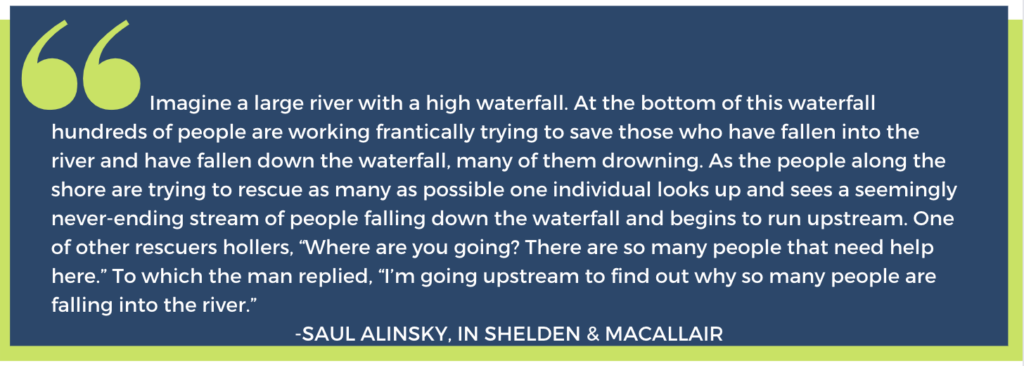
If you or someone that you know is experiencing domestic violence or abuse, there is a way out and Interface is here to help. Contact our 24/7 Crisis Hotline at 1-800-636-6738.
Visit us online at www.icfs.org to learn more about our programs and services and follow our Family Violence Intervention and Prevention on Instagram at @Interface_Prevention for updates on available training and community engagement.
